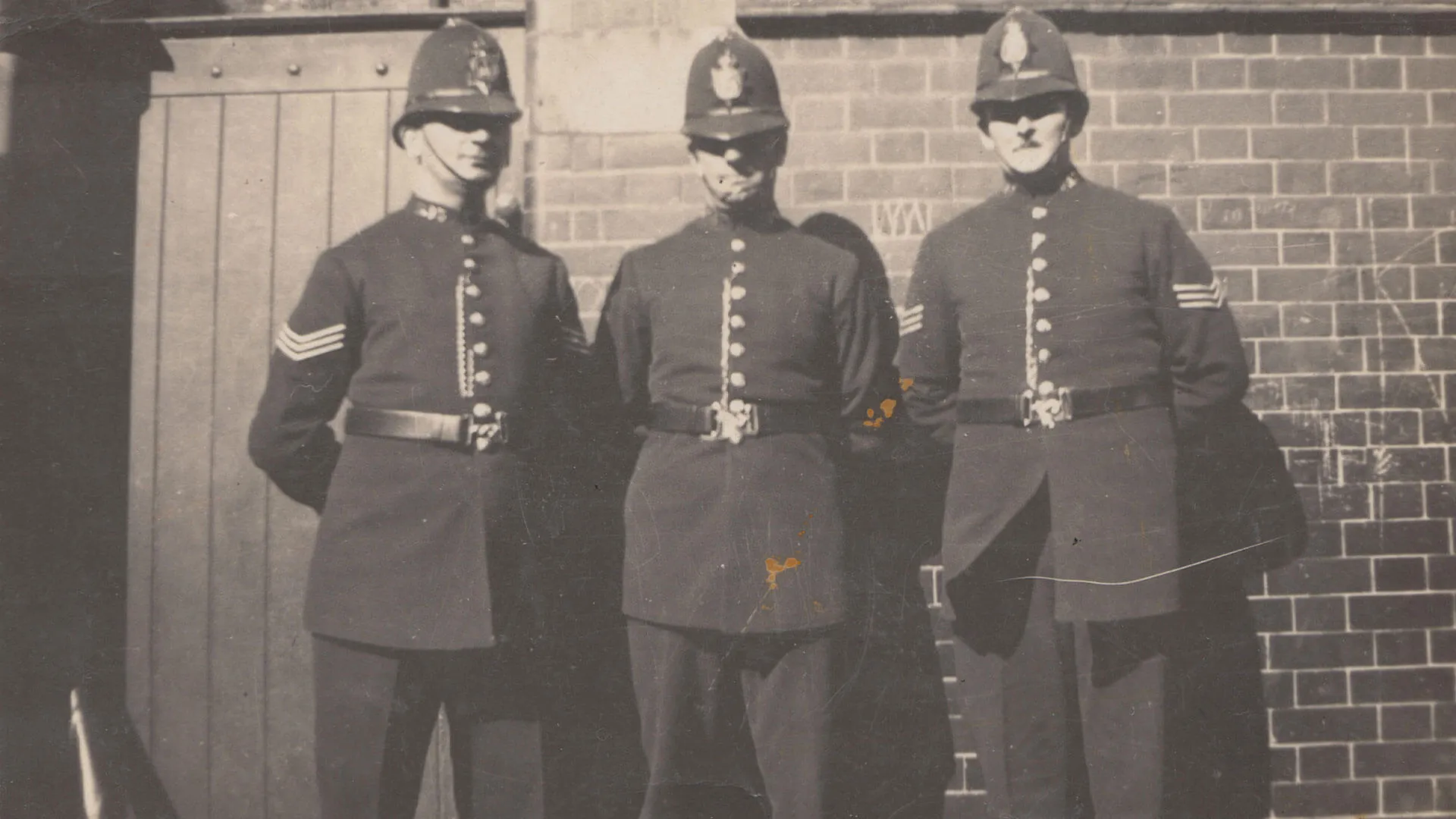

Surprising History of Victorian Era Scotland Yard

Much of what we know about Scotland Yard comes from British crime dramas or murder mysteries, but behind the name lies a remarkable story of police innovation. Scotland Yard’s Victorian history is a captivating tale of law enforcement evolution and forensic science breakthroughs. Simon Read, author of Scotland Yard: A History of the London Police Force’s Most Infamous Murder Cases, highlights surprising facts and key milestones and challenges faced by the London Metropolitan Police—from Charles Dickens’s ride-alongs to the advent of fingerprinting and Jack the Ripper’s criminal profile.
Constables Were to Prevent Crime, Not Investigate It
Scotland Yard, established in 1829, replaced a patchwork system of parish constables and night watchmen with the world’s first professional and centrally organized police force. Officers were responsible for community safety chiefly by raising the alarm if anything suspicious occurred; in effect, their job was to preempt any lawbreaking.“The role was to be a crime prevention force [because] if you have to investigate a crime, the crime has already happened,” says Read. “But of course, just through the sheer circumstance of Scotland Yard's work, they end up conducting investigations pretty early on.”
Scotland Yard Police Worked 365 Days a Year
There was a rule between 1874 and 1910 stating officers could not take rest days. “Back then, constables weren't necessarily held in high regard. These were often uneducated men and almost seen as workhorses to be treated however you like,” says Read. “And the police are meant to be a constant presence on the streets. If you're having days off, obviously that diminishes the police presence.“The powers that be at Scotland Yard also thought that if constables had a day off, they would just work another job that day to make money on the side. So why not keep having them work?”
Scotland Yard Pioneered a Plainclothes Detective Branch
Scotland Yard’s Detective Branch was the world’s first when it launched in 1842 with two detective inspectors, two senior officers, and six sergeants. “It becomes apparent that a plainclothes unit of officers specifically taxed with investigating crime is needed—especially after a series of five unrelated murders occur with four of them unsolved, which caused outrage in the press.”The first detectives reported to local London precincts, with less oversight from Scotland Yard headquarters. When a few of these officers participated in an 1877 betting scandal, the new Criminal Investigations Department (CID) took shape. “It’s more professional, more structured, and is centrally operated out of Scotland Yard,” says Read. “Beginning in 1878, detectives all reported into headquarters with this more streamlined command structure. CID men were considered more skilled; they’re paid more money. They really are promoted as the elite, and they start benefiting from advances in crime fighting techniques that the original Detective Branch didn’t necessarily have at its disposal.”
Charles Dickens Accompanied Officers on Patrols
The Victorian author did much to further a distinguished profile for Scotland Yard detectives. “Crime and the plight of the working class are major themes in Dickens’s novels, so he develops a natural interest in police work and what they do,” says Read. “He’s editor of a weekly journal called Household Words, and he invites members of the Detective Branch to his office. They sit around, they have brandy, they smoke cigars, and he ends up publishing a series of [anonymous] profiles on them. … Dickens becomes good friends with a detective named Charles Frederick Fields, accompanies him on patrol, and proceeds to base Bleak House’s Inspector Bucket on him."In his writing, “Dickens portrays the detective as a creative intellectual, like an art connoisseur who can look at a painting and know it must’ve been painted by Monet. But he ends up doing them a disservice because the Detective Branch can’t meet the standards Dickens has.”
Scotland Yard was Financially Liable for Riot Damage
A time of high unemployment and great hardship among London’s working class led to the 1886 West End Riots, where masses of people took to the streets, smashing storefronts and destroying property. “The police response is found utterly lacking by the media,” says Read. “The Pall Mall Gazette writes, ‘We're not surprised at the inability of the police to cope with a mob. We have had too much experience of their aptitude and impotence.’ “And of course, the whole purpose of Scotland Yard is to prevent crime and maintain law and order. A riot is the exact opposite of that. So, a law is passed called the 1886 Riot Damages Act, which says if damage to property or injuries to persons occur, then reparations will come out of funding for the police.” Surprisingly, that law stayed on the books until 2016.
Forensic Innovations During the Victorian Era
Scotland Yard capitalized on forensic advances that blended science with detective work in previously unimaginable ways. “You see Scotland Yard playing a major role in either pioneering things or advancing techniques developed elsewhere,” says Read. “It dabbles in ballistics, the study of bullets and firearms. … You see bloodstain analysis as early as 1866. (Forensic pathologists in the home office couldn’t yet tell if blood stains were human or animal but could tell if they were recent.) … Poisonings were of great public interest and toxicology became a crucial science detecting the use of arsenic, cyanide and strychnine—all household items at the time.“Scotland Yard is the first English-speaking force to use fingerprints. It establishes a Fingerprint Bureau at the tail end of the Victorian era in 1901,” says Read. “Fingerprints are complex. … CID head Edward Henry develops a system for sorting them based on their [physiological characteristics]. The ‘Henry Classification System’ was used internationally up until the 1990s.”
Jack the Ripper’s Effect on Policing
In a series of horrific crimes between 1888 and 1891, five female sex workers in London’s East End were raped, murdered, and mutilated. “Crime scene photography comes into its own during this investigation,” says Read. “You also have Scotland Yard experimenting with blood hounds; they’re put through exercises in Hyde and Regents Park and show they can track human scent, but the police commissioner couldn’t make up his mind whether to pay to have the dogs employed.“You also see the first attempt made at a criminal profile. The police don’t know what kind of guy Jack the Ripper is, so it’s difficult to develop suspects.” Scotland Yard asks a doctor to review autopsy reports and develop a personality sketch. “It’s a really interesting document,” says Read. The killer “attacks in the open, so he must move with speed. He’s physically strong based on the nature of the mutilations. The point to his killing is the mutilations. He’s probably normal looking as the final victim brings him back to her room. Probably wears dark clothing as he'd be covered in blood walking away.” While this forward-thinking profiling became a useful tool, particularly with serial offenders, Jack the Ripper was never apprehended.
Simon Read is the author of ten works of narrative nonfiction. His most recent book is Scotland Yard: A History of the London Police Force’s Most Infamous Murder Cases. His work has been featured on the top-rated true crime podcasts Criminal and Morbid. Visit him at simonreadwriting.com.



